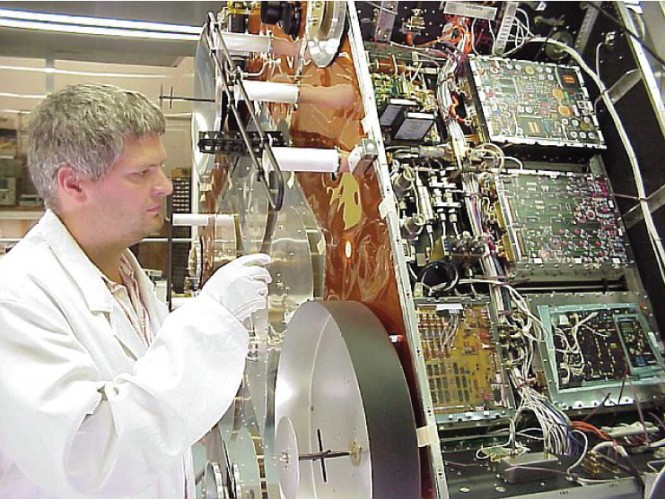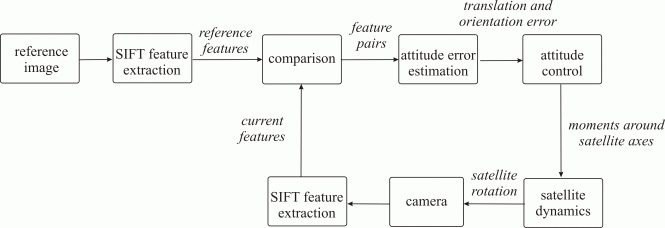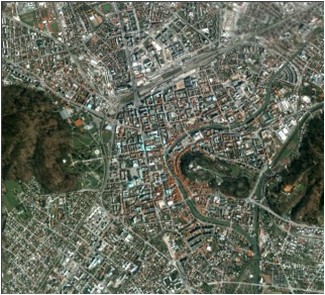Micro- and nanosatellite technologies

Micro- and nanosatellite technologies will focus on techniques for accurate maneuvering of orbital platforms for interactive remote sensing and formation flying. The main developmental-exploratory breakthroughs are expected in four areas:
- developing integrated structures from superplastic materials and alloys,
- virtual models for microelectromechanical systems (MEMS) optimization,
- satellite guidance for remote sensing and machine vision based formation flying and
- hybrid antennas with phased arrays and solar panels.
Remote sensing satellite control using image based sensor (simulation)
Earth-observation satellites need automatic attitude control system to steer the satellite to the desired Earth-observation point to perform environmental monitoring, meteorology, natural disaster monitoring, agriculture and similar. Such applications usually require navigation sensors (Earth magnetic, gyros, Sun sensor and star tracker) and observation sensors (imaging camera).
Our approach uses the same visual sensor, in this case an imaging camera for Earth observation as well as for attitude control which can be attractive for small-satellite missions. The desired spot on the reference image is selected to cover the desired observation area on the Earth. By comparing extracted features from the current image with the features from the reference image the satellite attitude error can be compensated. This is achieved by the proposed control structure, which according to the errors in image translation and orientation produce the required moments around satellite axes to cancel the satellite attitude error. More information is available at 10.1007/s10846-011-9621-1.
Example of the reference spot (Ljubljana, Slovenia) for the simulated camera is shown in the picture
and obtained animation movies
Without VB control
With VB control

